Habit tracking felt like a chore until I tried a simple paper-based system that breaks goals into two-week cycles. Now, slip-ups feel normal instead of fatal, and for once, I’m actually sticking with it.
My Failed Attempts With Habit Apps
I find that installing every shiny new habit app is in itself a bad habit. None of them quite worked for me in the long term. Each promised streaks and badges, as well as gamified systems. I even tried a variety of strict habit-tracking apps to keep me committed. Sometimes, those endless streak counters felt like a ticking time bomb.
One missed day erased my progress and sapped my motivation. Logging every detail felt like busywork. I let the tools become more important than the tasks.
Worst of all, most apps hide the reasons I slipped. Without context, I never learned from my mistakes. I ended up frustrated and stopped tracking altogether.

Related
Your Productivity Tools Don’t Matter Without a Strong System: Here’s Why
All the tools in the world won’t help if your system isn’t solid.
The Low-Tech Method That Finally Worked
I felt relieved when I discovered a one-year-old YouTube video. It describes a simple habit-tracking method—what I’ll call Thomas Frank’s Martin System in honor of the creator. Now, it’s helping me piggyback on my already established journaling habit to keep track of my tasks.
I’ll walk you through how I use this system now, but you can also find the original video linked in the final section below.
Setting Up: Notebook, Grid, and Symbols
The habit tracker uses just a notebook, a pen, and two-week cycles. Instead of chasing an endless streak, you commit for 14 days at a time. That short window feels doable.
At the start of each cycle, you pick two to four habits that matter most—say, a daily walk, reading, or going to bed on time. In your notebook, draw a table. Then, write days 1–15 (or any other block of dates) across the top and list each habit down the side.
Draw a grid of squares below each habit, each corresponding to the dates you want to do them on.
As not all habits are daily, note the frequency too. For instance: daily, weekdays only, or specific days. Separate the blocks accordingly to use as a visual cue for the frequency.
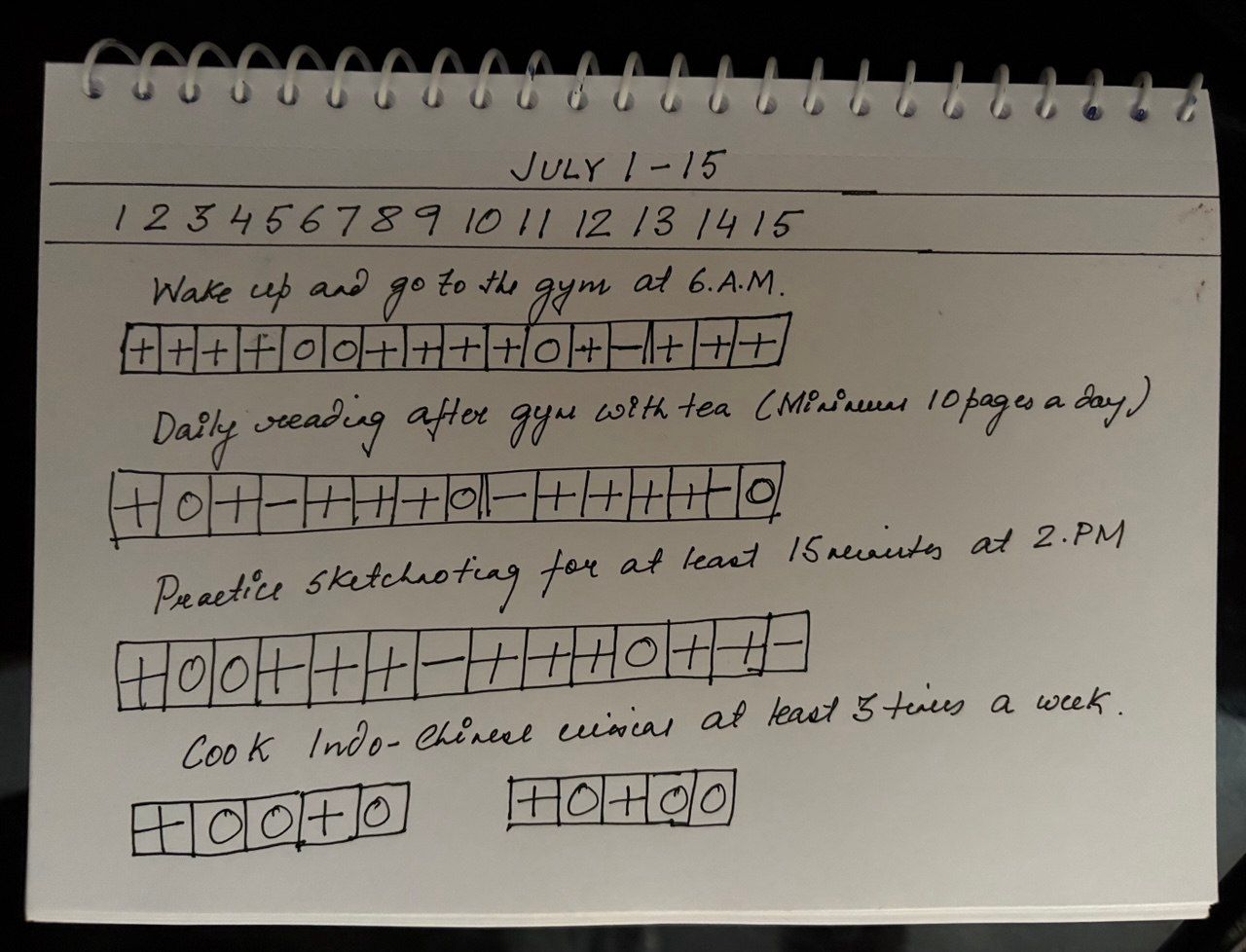
Every evening, I record one of three symbols:
- “+” for success
- “–” when I could have done better
- “O” when life got in the way
I jot a quick note under any – or O. For example, “Stuck at work” or “Felt tired.” Those notes help me spot patterns instead of feeling guilty. I mark a grid square with a hyphen ( – ) when I at least show up, even if it’s for 5 minutes. That might be when instead of writing a full blog post, I managed to write just 100 words.
Making Failure Useful
Create a dedicated section for failure notes where you can record the date and reason for any failures. I placed mine on the other side, so my “failures” are hidden from view.
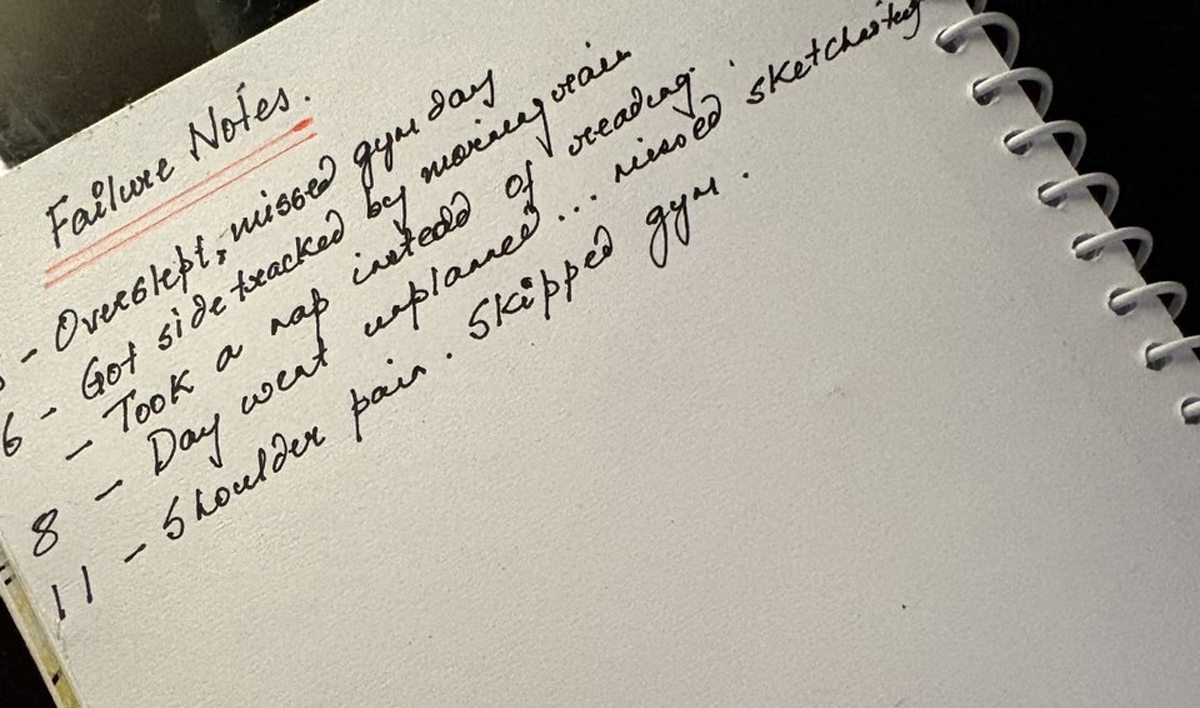
At the end of each cycle, use a cycle review section to reflect on what worked, what didn’t, and what to change for the next cycle.
On day 16, I spend five minutes jotting my thoughts on this page. I ask: Which habits stuck? What held me back? Then I tweak my plan for the next two weeks.
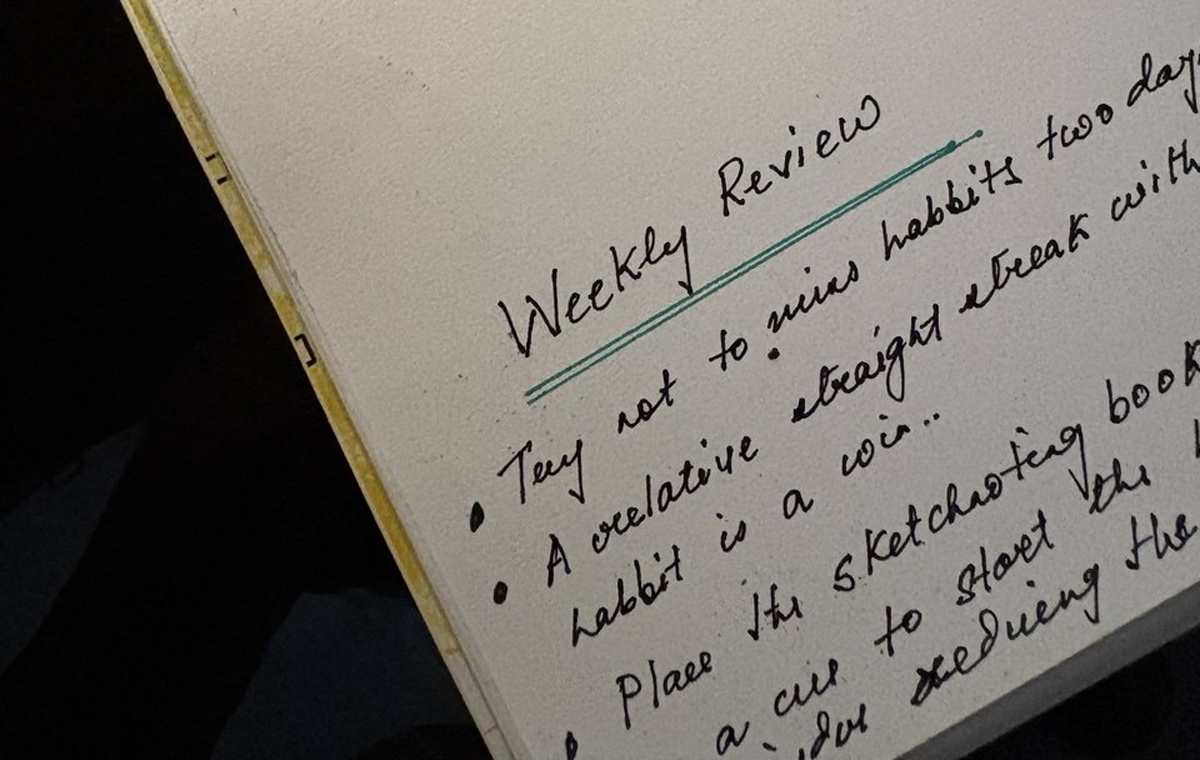
If a habit feels too hard, I lower its frequency or adjust its timing; if it flows easily, I consider adding a small new goal.
This daily marking fires my brain’s reward circuits and teaches it where to adjust. The short cycles of two weeks keep my discipline on an even keel.
This High-Tech Method Can Also Work
You can replicate the two-week grid in any note-taking app like Notion or Apple Notes.
In Notion, create a table with days 1–15 as columns and your habits as rows. Add a Status property that you update each evening with +, –, or O, and include a Notes column for quick failure reasons. Use filters or views to spotlight incomplete habits or visualize streaks with simple color tags.
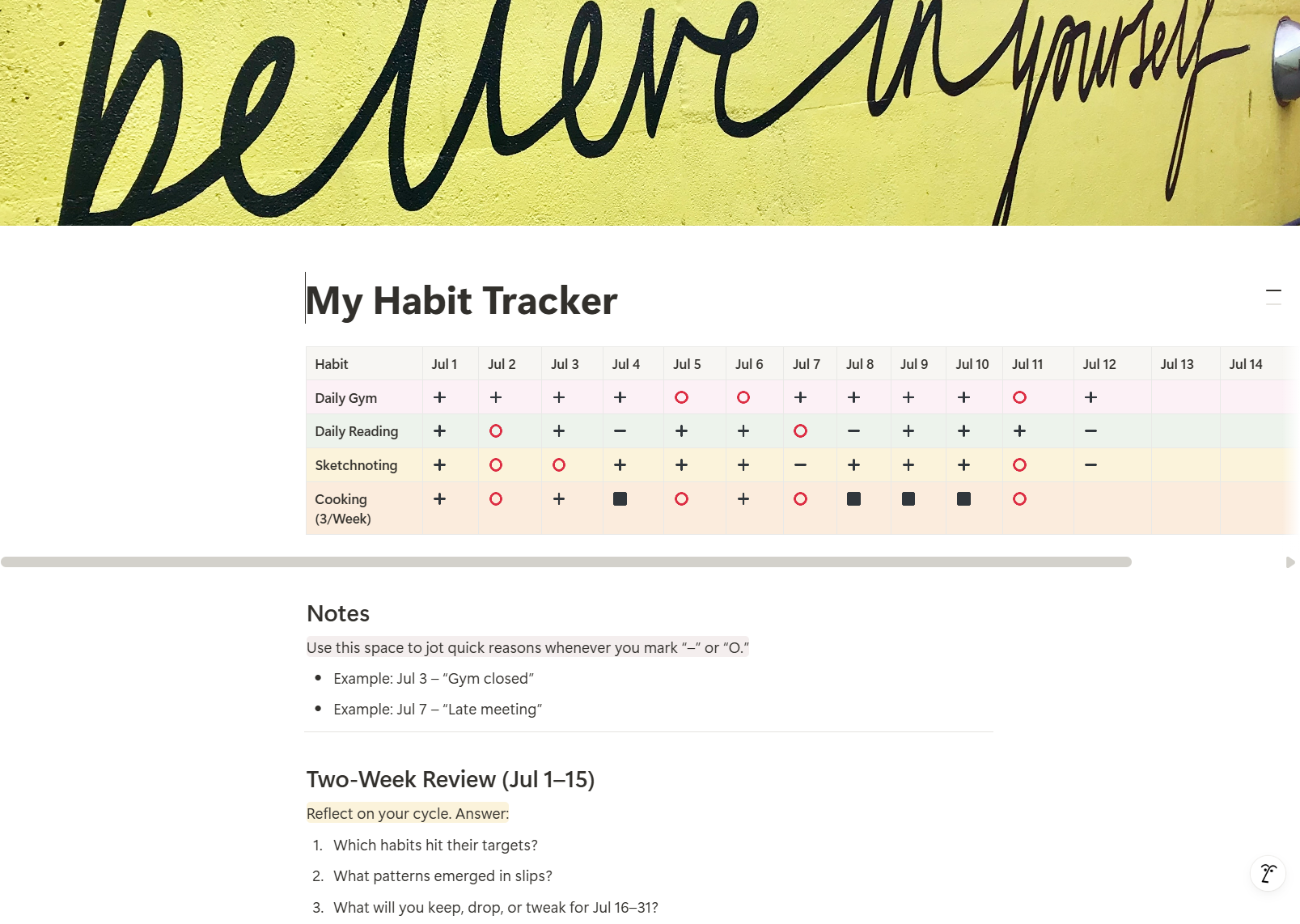
In Apple Notes, draw a basic table or use checklists grouped into two sections (days 1–15 and 16–end). Tap or type your symbols in each cell and add a line or two underneath any – or O.
At the end of the cycle, scroll back to review your entries, tally wins, and spot patterns. This digital twist keeps your system portable and backed up.
How to Get Started Today
In his YouTube video “A Better Way to Track Your Habits”, Thomas Frank suggests starting with a two-week cycle. This period can work like a “prototype,” helping you recalibrate if you need to tweak your habits and routines.
Grab a simple notebook and a pen you enjoy writing with. Pick two to four clear, specific habits, like “walk 20 minutes,” “read one chapter,” or “go to bed by 10 PM”, avoiding vague goals.
I use a spiral notebook and keep it standing on my desk. The tracker is always in my eyeline and works like a reminder.
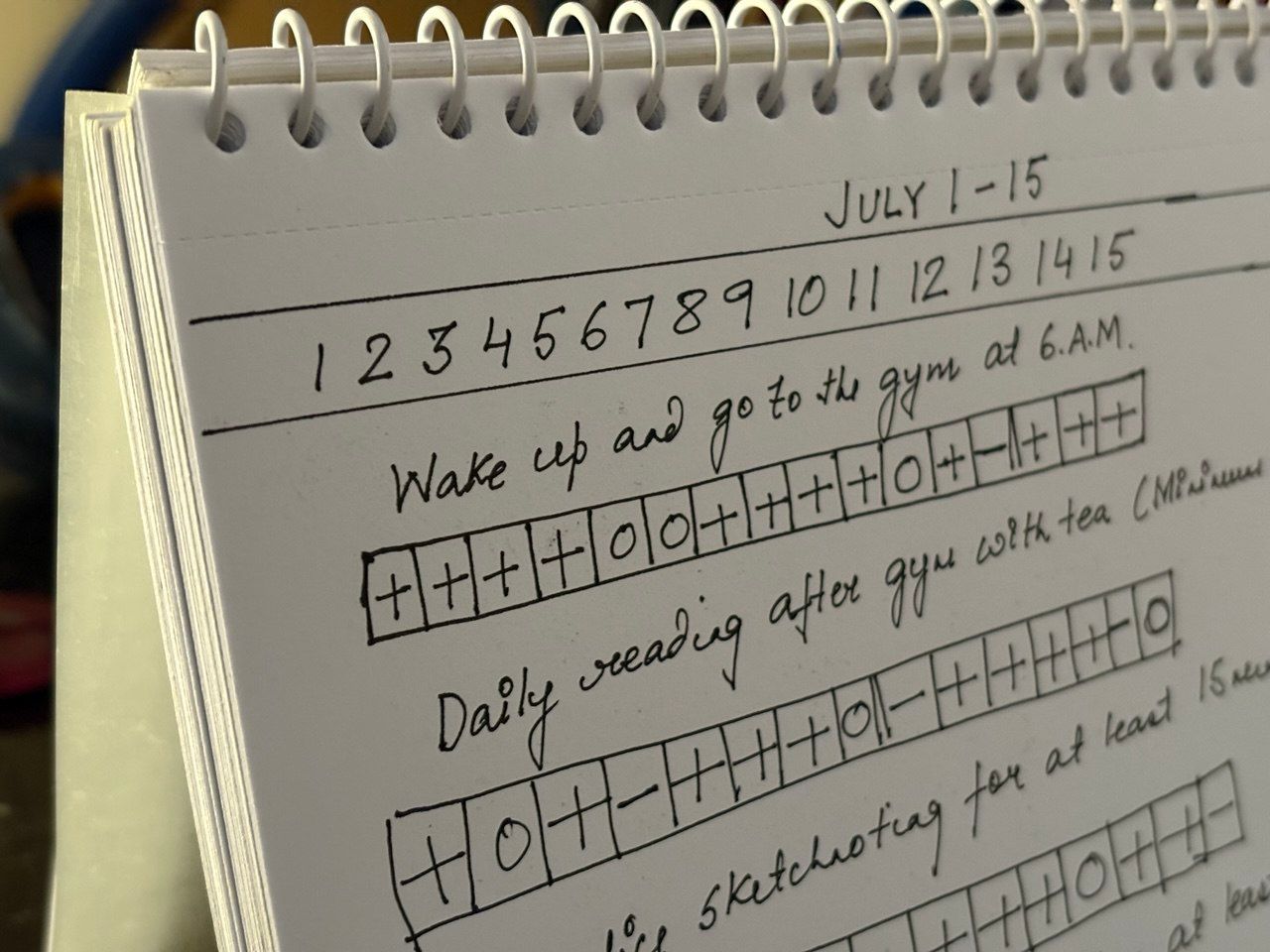
Optionally, share a snapshot of your filled grid with a friend or on social media for extra motivation. Finally, reward yourself for finishing a cycle. Small treats or moments of rest reinforce the habit loop and keep you moving forward.
By working in bite-sized bursts, you dodge the guilt of endless streaks. You learn from slips instead of punishing yourself. And you keep motivation fresh by resetting every two weeks. Grab your notebook and start your first cycle today. You’ll be surprised how small, focused efforts lead to big changes.








